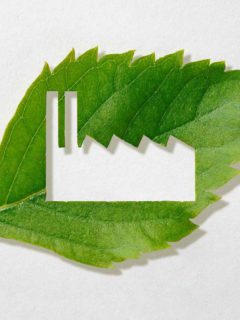Bubble wrap is a packaging material that is particularly popular with professionals. Indeed, its multiple air bubbles offer optimal protection to the most fragile products. It stands out as a real bulwark against shocks.
What can you protect with this material? How do you make a package with bubble wrap? What types of bubble wrap can be found on the market? Find key information for successful bubble wrap with RAJA.
What to do with bubble wrap
Bubble wrap is generally used to wrap products to protect them during transport. Properly wrapped in bubble wrap, the most sensitive objects are significantly less subject to shock or vibration. Thus, it is used to wrap small fragile packages containing, for example, glass or breakable objects.
Bubble wrap is also an essential material for removals. It has the advantage of being adaptable to any shape. It can therefore be used to pack large pieces of furniture, crockery, etc.
Which way to put the bubble wrap?
Should you put the bubbles inwards or outwards to ensure your products are protected? There is, indeed, a preferred direction. The smooth side of the bubble wrap is placed towards the outside, while the bubbles should be placed in contact with the product to be protected.
In this way, the small air bubbles making up this packaging material form a kind of protective mattress. This allows the contents of your package to remain intact.
The different types of bubble wrap
In most people’s minds, bubble wrap comes in the form of a clear plastic roll. Yet there are different varieties.
The classic bubble wrap
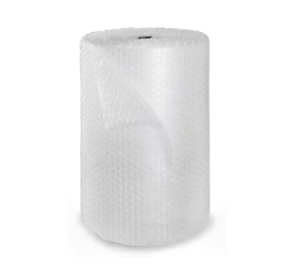 |
The classic bubble wrap is therefore the most common of these. It can come in roll form, with pre-cut or uncut sheets, or in bags. It is used as packaging or as cushioning for fragile products. |
Kraft bubble wrap
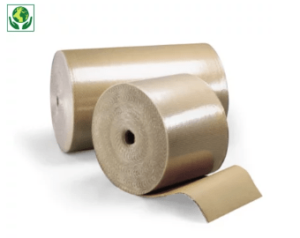 |
The bubble wrap with kraft paper helps to protect the parcel from shock, but also from light. It offers double protection to your products. Kraft bubble wrap is opaque, allowing it to ensure the discretion of your shipments. |
Anti-static bubble wrap
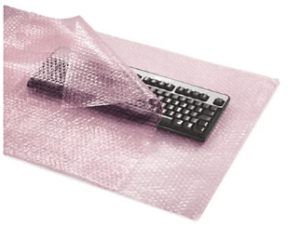 |
|
Foam bubble wrap
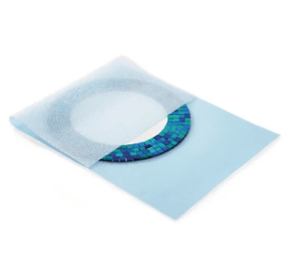 |
|
Isothermal bubble wrap
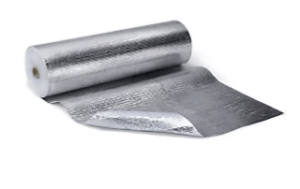 |
The metallic side of the isothermal bubble wrap keeps products at the right temperature, while its bubble wrap side protects them from shock. Thanks to its thermal insulation function, this model is ideal for transporting products that are sensitive to thermal shocks, such as chocolate. |
Eco-responsible packaging alternatives with bubble wrap
While bubble wrap is an ideal solution for protecting products from possible shocks, it is nonetheless decried. Indeed, it is mostly composed of polyethylene, a polluting plastic. Rest assured, there are green alternatives for packaging your products.
Recycled bubble wrap
It is the environmentally friendly alternative to traditional bubble wrap, a real innovation in the packaging industry. Recycled bubble wrap offers all the benefits of bubble wrap, namely optimal impact protection, appreciable lightness for transport, and good value for money.
But it does have one major advantage over its first version. Made from recycled and recyclable plastic, it is clearly more environmentally friendly. It therefore allows companies using it to be part of an eco-responsible approach.
Kraft paper
Protective, strong, and easy to use, kraft paper is an increasingly used material for product packaging. This is particularly the case in environmentally conscious companies that want to green their packaging.
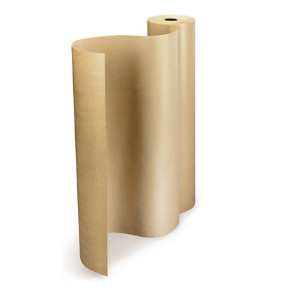 |
Resistant, kraft paper is designed for wrapping or cushioning all types of products, from the lightest to the heaviest. It has the advantage of being modular, opaque, antistatic, and enhances the products. Finally, kraft paper is biodegradable, making it a material of choice. |
Tissue paper
Silk paper can be made from wood fibres or cotton fabric. It is a natural and environmentally friendly materialparticularly used for the packaging of delicate products. Its fine appearance and softness allow it to enhance the goods. It also has biodegradable properties so it is an ideal packaging to move towards greener logistics, and why not, create eco-designed packaging.
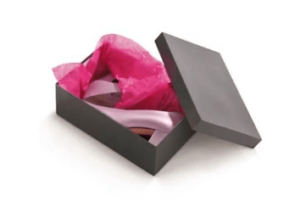 |
While tissue paper can be found in neutral tones, such as white, it can also be coloured and customised with the company’s logo and colours. It gives the package a perfect finish, a particularly refined decorative touch. |
Nevertheless, it is best not used alone for brittle products. This delicate material offers good protection against micro-scratches, but not enough against breakage.
Protecting your packages is essential to providing the best customer experience, so don’t skip this crucial step when packing. Want to learn a little more about bubble wrap? Find 5 things you need to know about this protective packagingon the RAJA blog.













